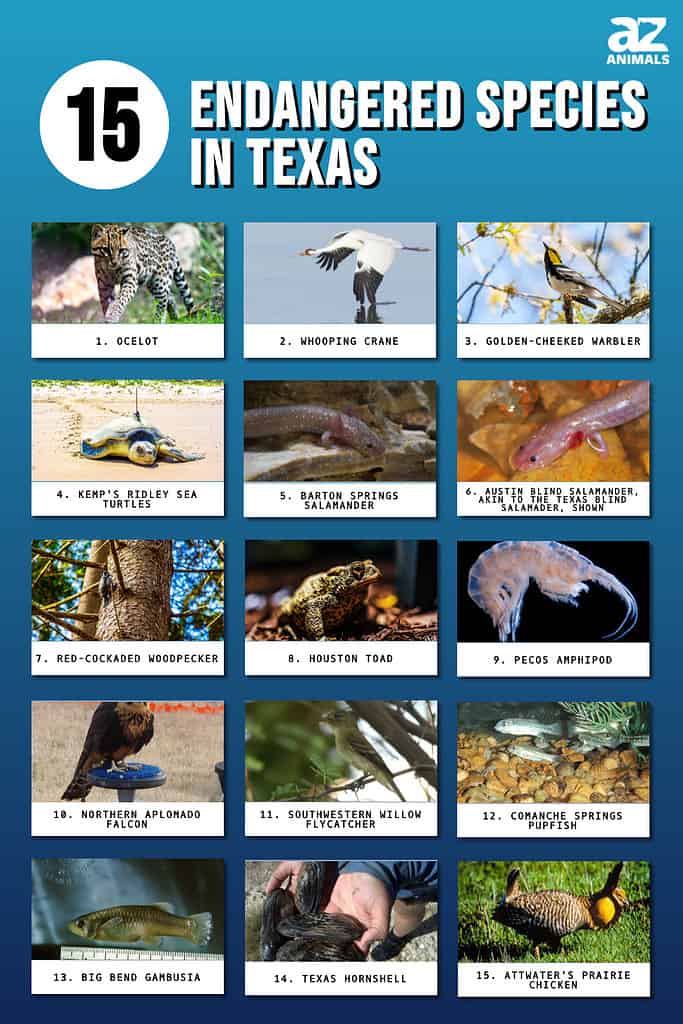
Critically endangered species are those that are at risk of going extinct or already have gone extinct in the wild. The likelihood of an endangered species going extinct in the wild is extremely high. An animal must fulfill particular requirements involving population or habitat loss to be added to the category. At least one of the five Red List criteria is met by vulnerable species. They are considered highly vulnerable to extinction due to human activity if conservationists don’t step in. As of July 2016, Texas was home to 97 endangered or threatened animal and plant species. This article lists 15 endangered species in Texas.
15 Endangered Species In Texas
1. Ocelot

Adult ocelots can grow up to 3 feet long.
©Saad315/Shutterstock.com
Only two small populations of ocelots remain in deep south Texas, where they were once common throughout much of the Lone Star State. The ocelot is a stunning medium-sized spotted cat with bobcat-like body proportions. Adult males can reach a maximum length of 3 feet, 10 inches, and adult females can reach a height of 3 feet. This species was nearly extinct in the 20th century due to widespread fur hunting.
South America’s tropical regions are home to ocelots, but they are most common in the dense forests of the Amazon Basin. Previously, the ocelot was seen prowling throughout the southern part of the state, with isolated sightings in the north and central Texas.
2. Whooping Crane

The whooping crane is North America’s tallest bird species.
©Kent Ellington/Shutterstock.com
The whooping crane is among the rarest and most endangered birds in North America. With males growing to nearly five feet in height, the majestic whooping crane is North America’s tallest bird species. This crane spends its winter at Aransas National Wildlife Refuge near Rockport in Texas and nests in the Wood Buffalo National Park marshes in northern Canada. Whooping cranes are protected in Mexico, the United States, and Canada. These lands are managed to conserve the animals because a portion of their habitat is protected by federal law.
3. Golden-cheeked Warbler
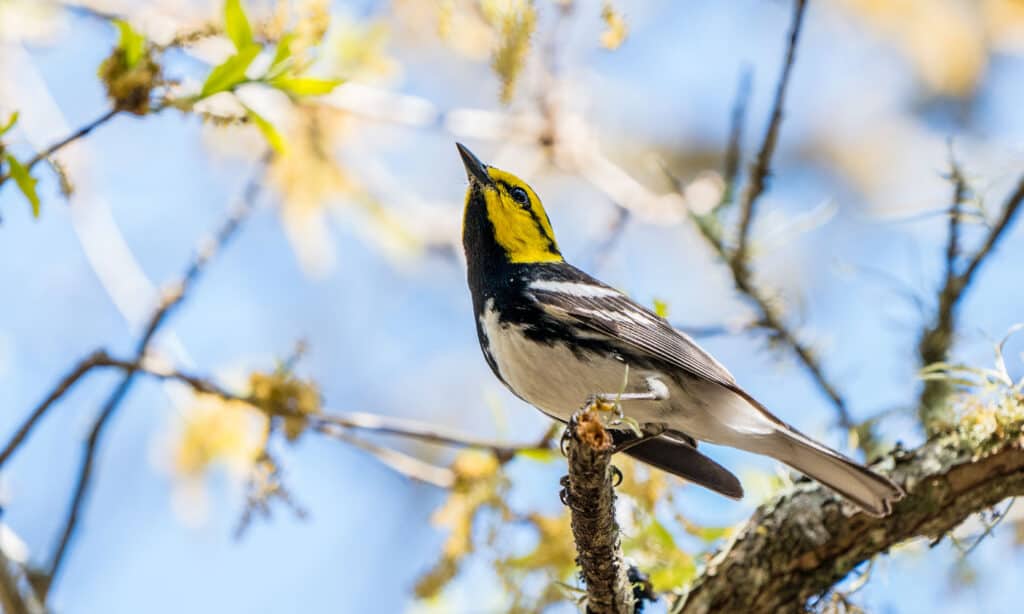
The golden-cheeked warbler is the only bird species whose breeding territory is limited to the Lone Star State.
©Michael Armentrout/Shutterstock.com
Golden-cheeked warblers are little, migratory songbirds with a length of 4.5 to 5-inch and an 8-inch wingspan. The oak-juniper woodlands in Central Texas are the only site where one can find the golden-cheeked warbler. Additionally, it is the only species of bird whose breeding territory is limited to the Lone Star State. Because so many tall juniper and oak forests have been destroyed to make way for buildings, highways, and shops, golden-cheeked warbler populations are at risk. Some habitats have to be destroyed to cultivate crops or grass for livestock. When huge lakes were constructed, other habitat areas were submerged.
4. Kemp’s Ridley Sea Turtles
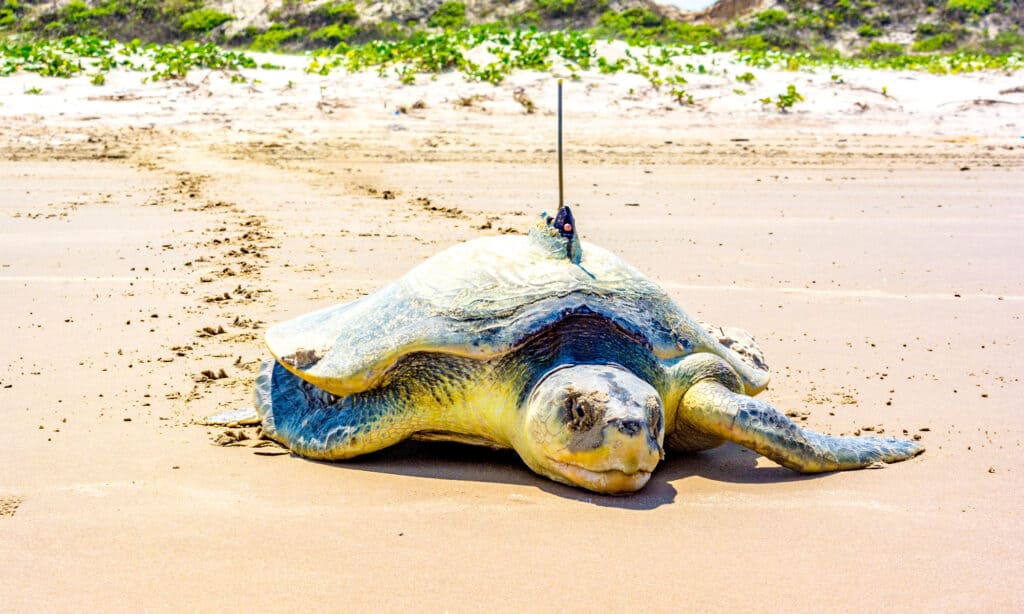
Kemp’s ridley sea turtle is the rarest and most endangered species of marine turtle in the world.
©JB Manning/Shutterstock.com
Exclusively found in the coastlines and waters of the Gulf of Mexico, Kemp’s ridley sea turtles frequently nest on the beaches of Texas’ Bolivar Peninsula. This species of sea turtle is also the rarest and most endangered species of marine turtle in the world. The turtle is again in decline, notwithstanding some encouraging trends of population expansion between 1997 and 2009 when populations increased 12 to 19% yearly.
5. Barton Springs Salamander
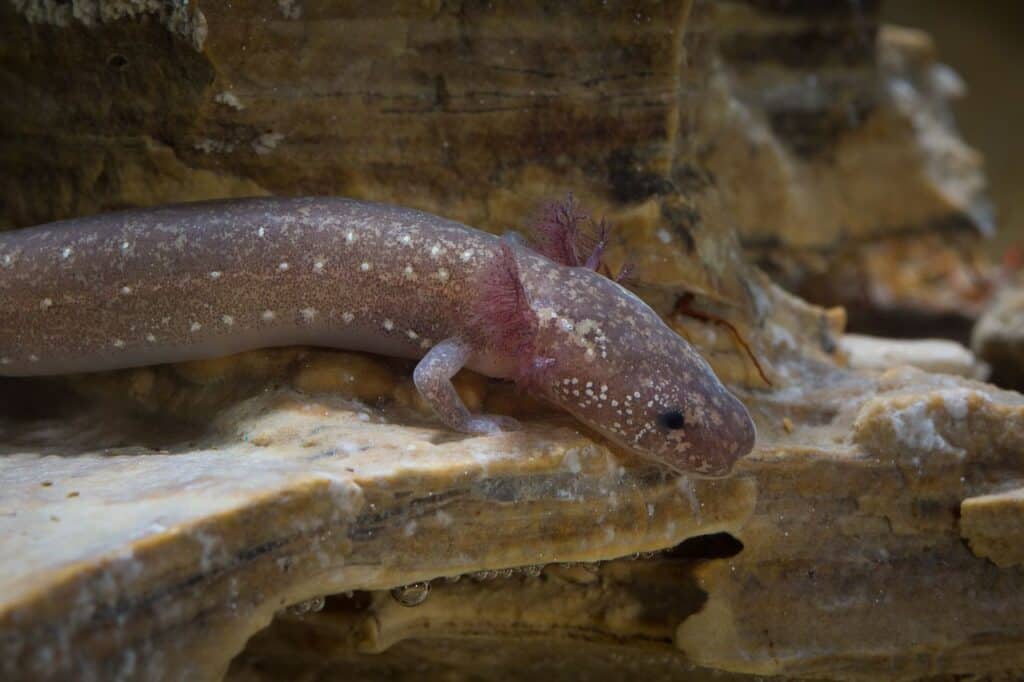
The Barton Springs salamander is frequently spotted near spring openings.
©Ryan Hagerty/USFWS / public domain – License
An endangered lungless salamander exclusively found in Texas is called the Barton Springs salamander. Texas is its only known habitat where it was initially discovered in Barton Springs in Austin, but it is now recognized in other places in the neighboring counties of Travis and Hays. The Barton Springs salamander is classified as vulnerable on the IUCN Red List, although it is endangered on the federal level and in the state of Texas. The Barton Springs salamander prefers clear water and is frequently spotted near spring openings. Due to the salamander’s listing, the City of Austin could not use bleach to clean the Barton Springs Pool as it had for the previous 70 years.
6. Austin Blind Salamander

The Austin blind salamander is similar to the Texas blind salamander, exclusive to San Marcos, shown here. Both are endangered.
©Matt Jeppson/Shutterstock.com
An endangered member of the Plethodontidae family of salamanders, the Austin blind salamander is also exclusive to Barton Springs in Austin, Texas. These salamanders are extremely vulnerable to extinction due to their small range, dangers from water pollution, and misuse. The federal government protects them. With 120 acres of protected habitat, Austin blind salamanders are now safeguarded as an “endangered species.”
7. Red-cockaded Woodpecker
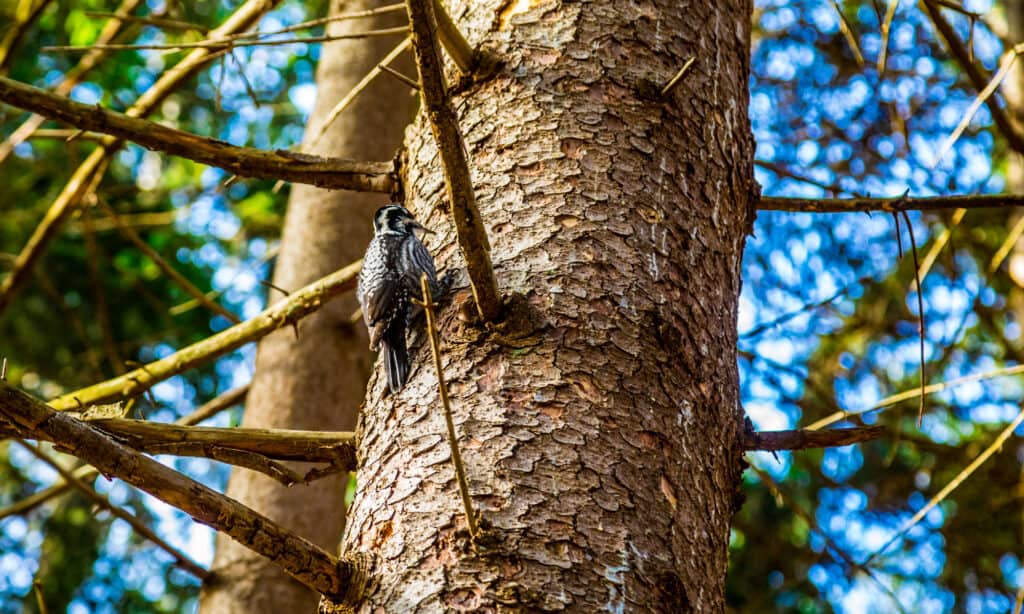
The red-cockaded woodpecker lives in mature longleaf pine savannas.
©Bosko/Shutterstock.com
Red-cockaded woodpeckers are only found in a small number of states in the U.S., and their geographic distribution is relatively limited. This threatened species lives in mature longleaf pine savannas, a very specific habitat and is only found in protected areas like state and national forests. In contrast to their name, these birds’ immaculate white cheeks are almost totally covered in black and white feathers. The best chance of seeing one is at a wildlife refuge because they are no longer frequently observed in the wild.
8. Houston Toad
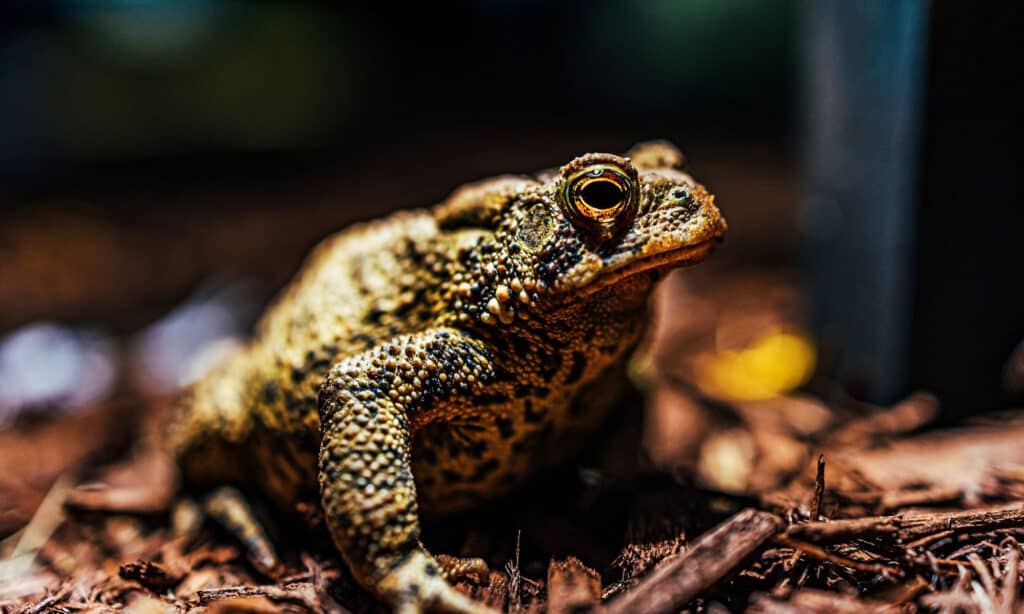
The Houston toad is endemic to Texas.
©Wirestock Creators/Shutterstock.com
The Houston toad is an amphibian native to Texas and at risk of extinction. The toad was the first amphibian to be endangered under the United States Endangered Species Act in 1970. On the IUCN Red List of Threatened Species, they have been listed as Endangered since 1986. The Post Oak Savannah area of east central Texas is home to the Houston toad, a terrestrial amphibian that prefers deep sandy soils. This species is threatened by ongoing habitat loss, severe droughts, and wildfires.
9. Pecos Amphipod
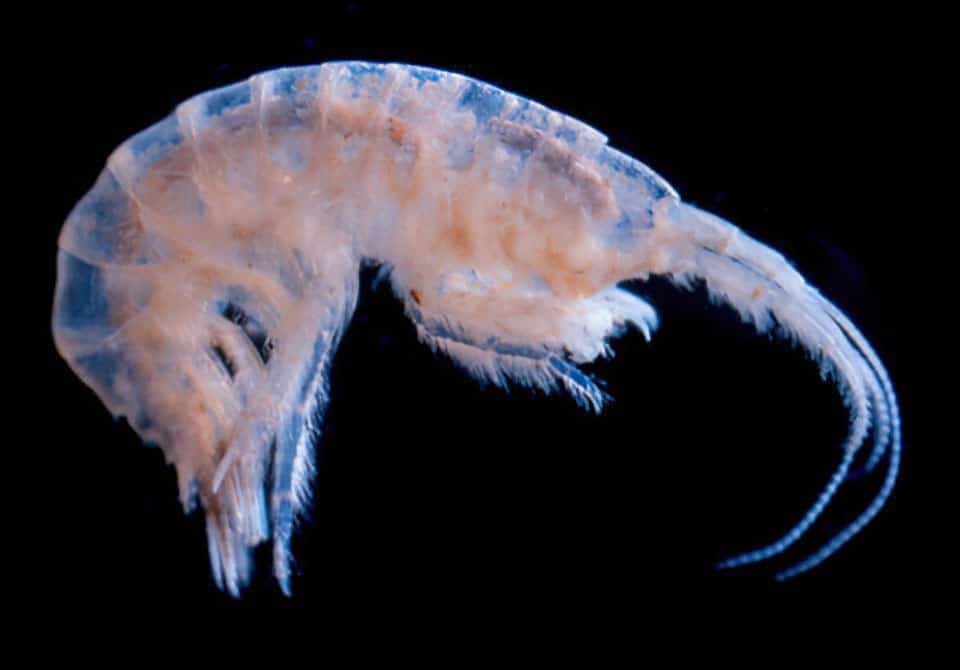
The Pecos amphipod can be found in Leon Creek and Diamond Y Spring in Pecos County.
©Yale Peabody Museum of Natural History / Eric A. Lazo-Wasem / CC0 1.0 – License
Gammarus Pecos, often known as the Pecos amphipod, is a species found only in two places: Leon Creek and Diamond Y Spring in Pecos County, Texas. The IUCN Red List identifies Gammarus Pecos as a vulnerable species, and a piece of the spring habitat used by this species is now protected.
10. Northern Aplomado Falcon

Most Aplomado falcons are currently found in Central and South America.
©Beth Fortner / CC BY 3.0 – License
The Northern Aplomado falcon was once endemic to south Texas and the far western Trans-Pecos region, but it disappeared in the 1930s. It is a vividly patterned, colorful Neotropical falcon that falls into the size scale of North American falcons, just between the merlin and peregrine falcon. Most Aplomado falcons are currently found in Central and South America, with only a small population remaining in Texas due to conservation efforts. Texas still has very few Aplomados, federally and legally classified as endangered. Around 100 Aplomado falcons survive independently in roadside habitats in southern and coastal Texas, where birders can view them.
11. Southwestern Willow Flycatcher
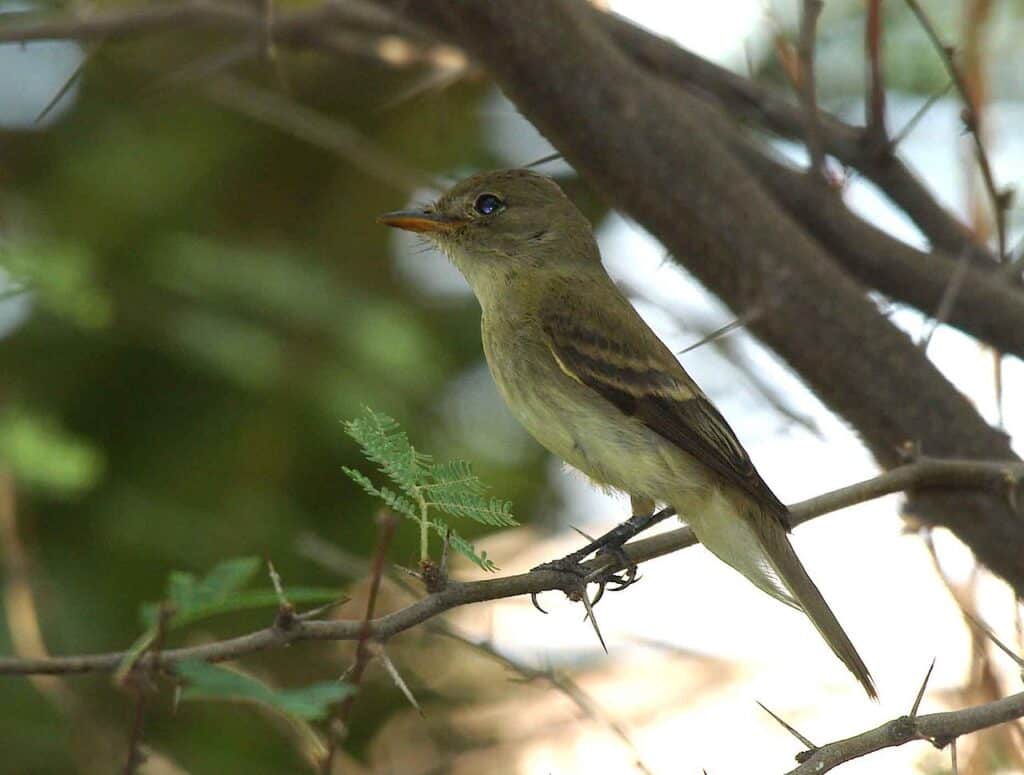
The southwestern willow flycatcher is commonly known as the Traill’s flycatcher.
©Pacific Southwest Region USFWS from Sacramento, US / CC BY 2.0 – License
The Tyrannidae family of birds includes the southwestern willow flycatcher, commonly referred to as Traill’s flycatcher. It was designated as a federally endangered species by the U.S. Fish and Wildlife Service in 1995, and a recovery strategy was completed in 2002. Only 900 to 1,100 pairs were thought to have been left by 2002. These birds breed in dense stands of deciduous trees and shrubs, particularly willows, or at the boundaries of woodlands.
12. Comanche Springs Pupfish

The Comanche Springs pupfish can be found in the springs close to Balmorhea.
©USFWS / public domain – License
Comanche Springs pupfish inhabit the water coming from springs in west Texas. These fish once lived in Comanche Springs, close to Fort Stockton, but they perished in 1955 when the springs dried up. They can only now be found in the springs close to Balmorhea. Due to the drying up of many of the huge springs in West Texas, these pupfish are at risk. The amount of water pumped out of the earth exceeds the amount of water restored by rainfall. Near Balmorhea, an oasis in the desert has been created to serve as a fish habitat.
13. Big Bend Gambusia
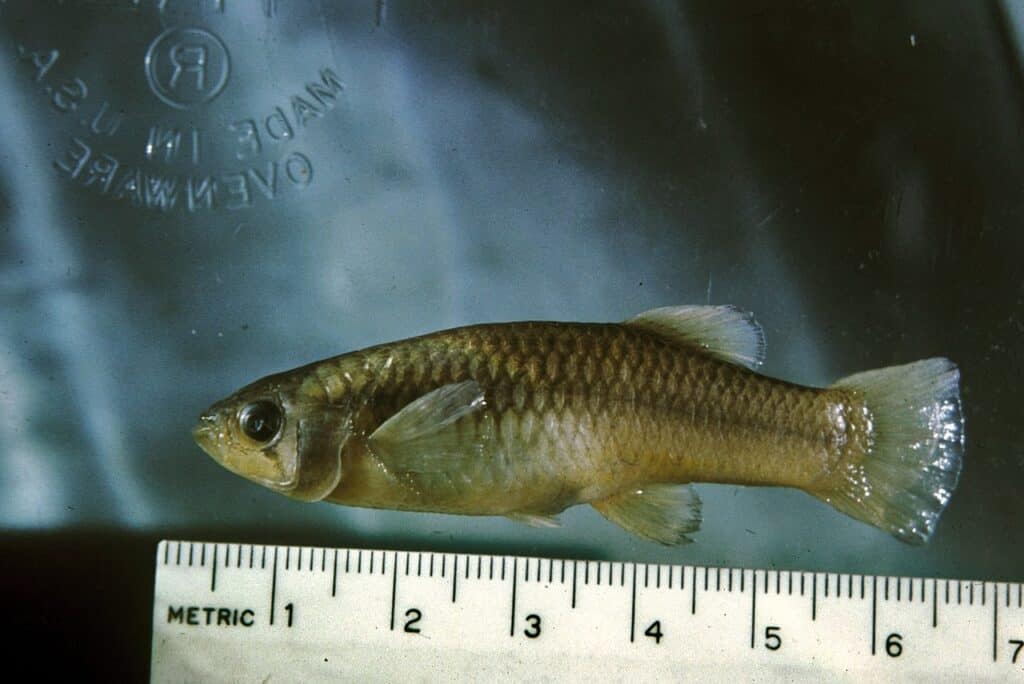
The remaining population of the Big Bend gambusia can be found in a pond in Big Bend National Park.
©Johnson, James E. / public domain – License
A miniature, live-bearing fish, the Big Bend gambusia only exists in the Big Bend area of the Rio Grande in Mexico and the United States. In a protected pond in Big Bend National Park, there is the only known remaining population of this species. The local population perished when the water stopped running at Boquillas Spring in 1954.
14. Texas Hornshell
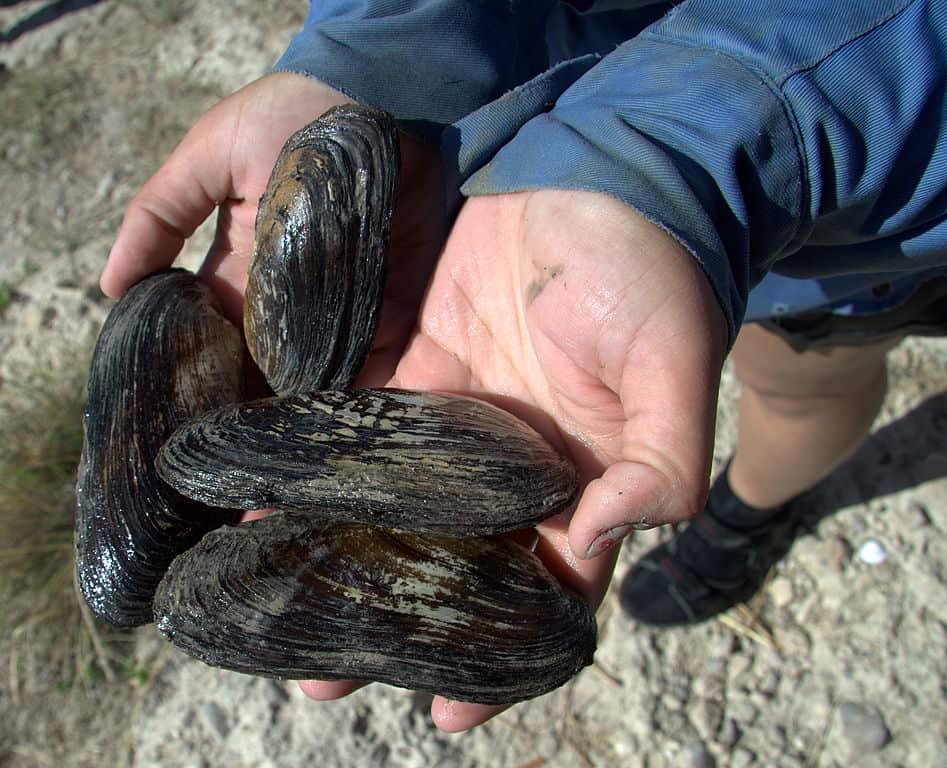
The Texas hornshell can be discovered under limestone shelves and in shallow, slowly moving water.
©Joel Deluxe / CC BY 2.0 – License
A kind of freshwater mussel, called the Texas hornshell, can be found in Mexico and Texas and New Mexico in the United States. In 2018, the Endangered Species Act finally gave this endangered freshwater mussel, the last native mussel in New Mexico, the protection it needed. The Texas hornshell can be discovered under limestone shelves and in shallow, slowly moving water. In Texas’ Big Bend National Park, surveys that began in 2005 discovered 48 dead hornshells.
15. Attwater’s Prairie Chicken
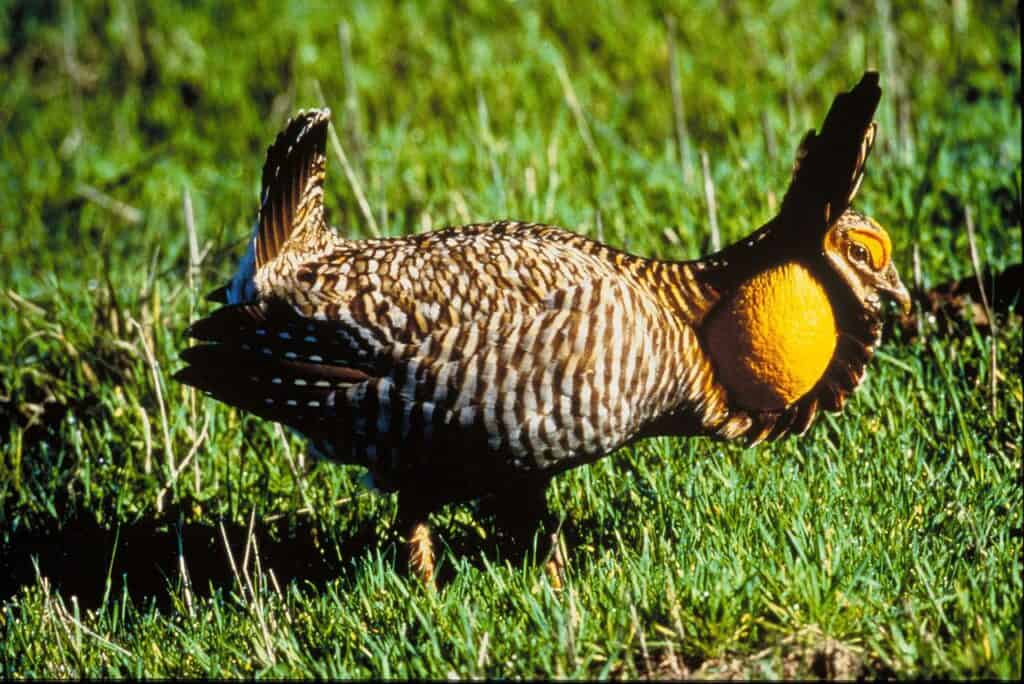
The Attwater’s prairie chicken is a subspecies of the greater prairie chicken.
©Lavendowski, George; USFWS / public domain – License
The Attwater’s prairie chicken is a medium-sized, brownish grouse with strong black bars and a short, rounded tail that is blackish. It is a subspecies of the greater prairie chicken native to coastal Texas and Louisiana and is extremely endangered. Its historical range extended west from Louisiana’s Bayou Teche to Texas’ Nueces River and perhaps as far south as Tamaulipas, Mexico. The Attwater Prairie Chicken National Wildlife Refuge neighboring Eagle Lake, Texas, and on private property in Goliad County are the only places where populations can be found in the wild today.
Summary Of The 15 Endangered Species In Texas
| Rank | Species |
|---|---|
| 1 | Ocelot |
| 2 | Whooping Crane |
| 3 | Golden-cheeked Warbler |
| 4 | Kemp’s Ridley Sea Turtles |
| 5 | Barton Springs Salamander |
| 6 | Austin Blind Salamander |
| 7 | Red-cockaded Woodpecker |
| 8 | Houston Toad |
| 9 | Pecos Amphipod |
| 10 | Northern Aplomado Falcon |
| 11 | Southwestern Willow Flycatcher |
| 12 | Comanche Springs Pupfish |
| 13 | Big Bend Gambusia |
| 14 | Texas Hornshell |
| 15 | Attwater’s Prairie Chicken |
The photo featured at the top of this post is © William Cushman/Shutterstock.com
Sources
- Texas Parks and Wildlife, Available here: https://tpwd.texas.gov/landwater/land/habitats/cross_timbers/endangered_species/
- Earth.Org, Available here: https://earth.org/7-of-the-most-endangered-species-in-texas/
- BallotPedia, Available here: https://ballotpedia.org/Endangered_species_in_Texas
Thank you for reading! Have some feedback for us? Contact the AZ Animals editorial team.






